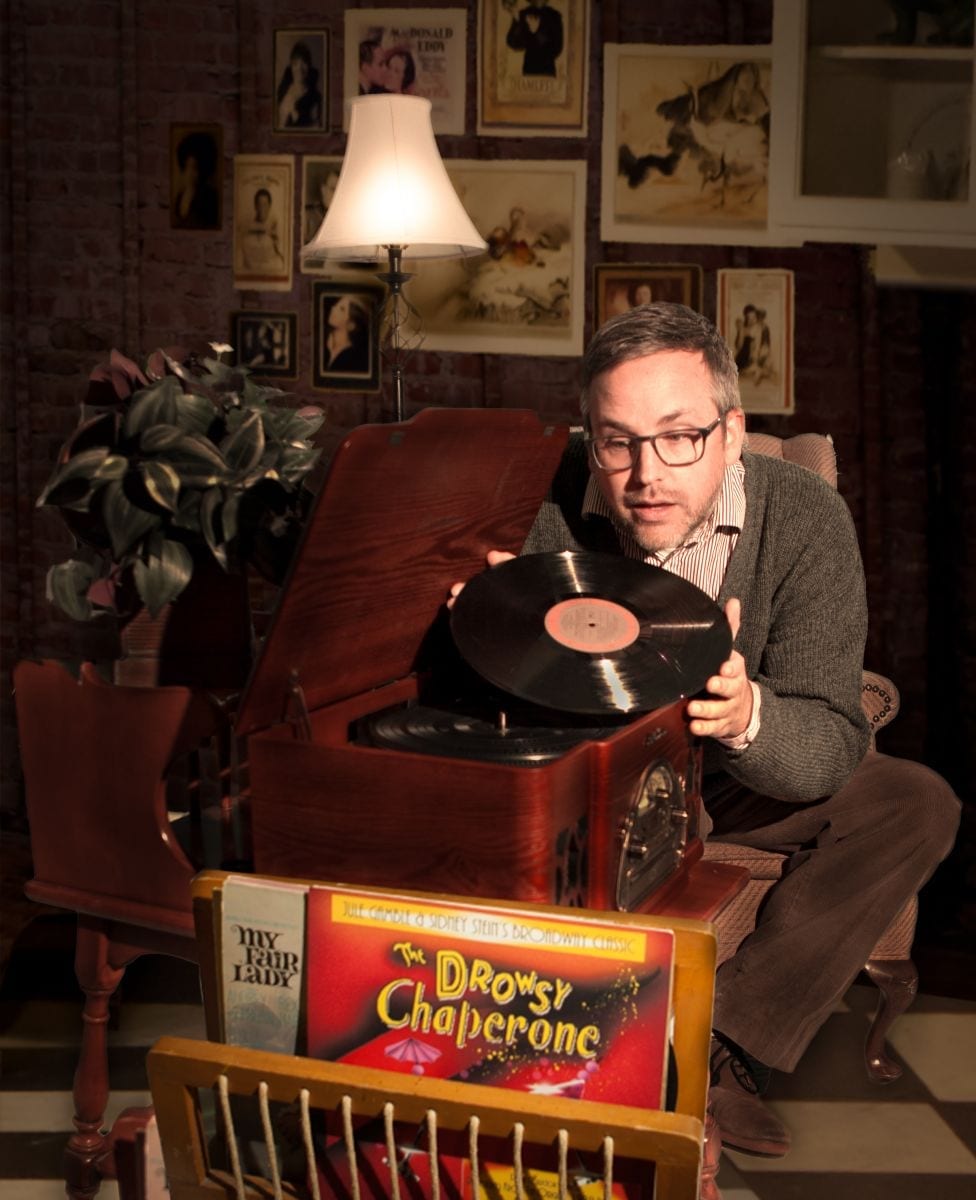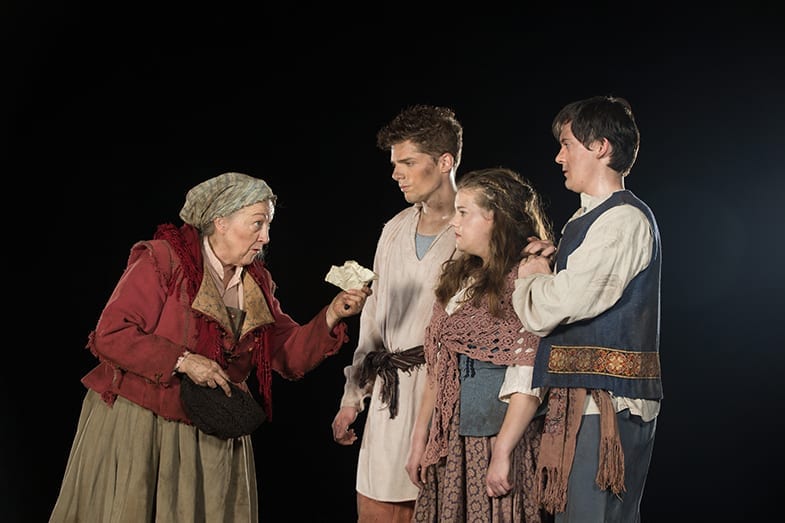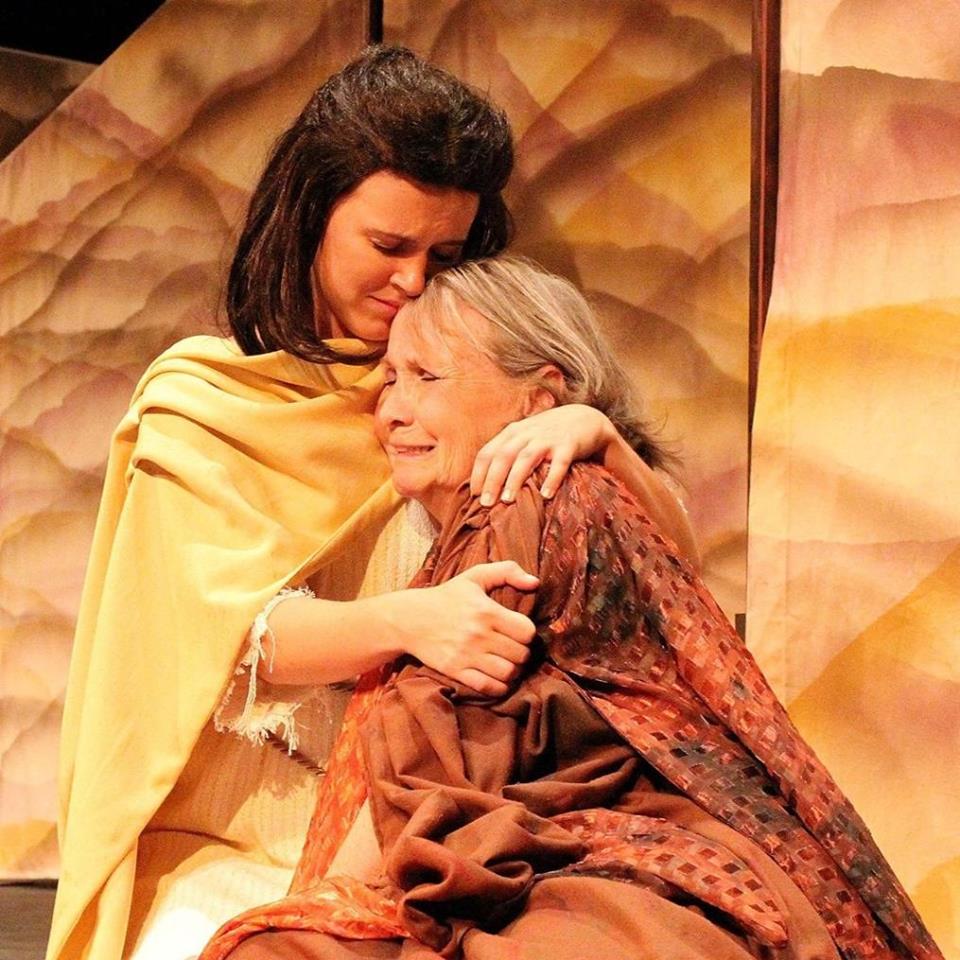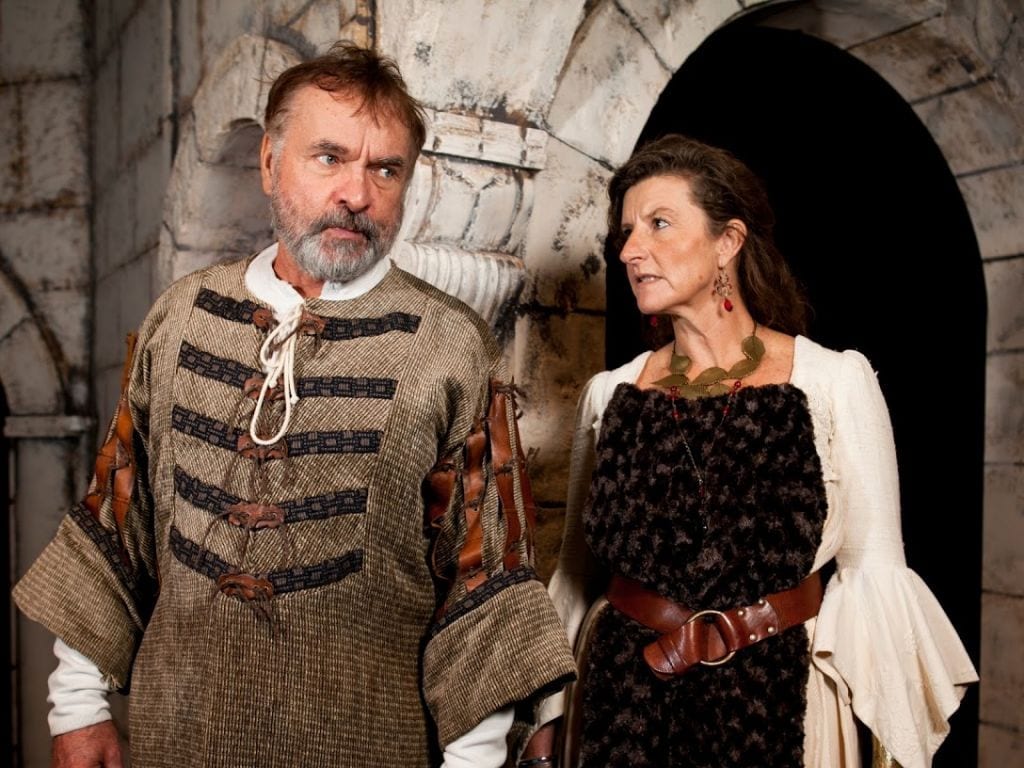OREM — How would you like to spend your Friday evening with a mousy middle-aged agoraphobic Broadway fanatic as he plays, sings along, and provides commentary about his favorite 1928 musical on a record player? Sounds kind of awkward, and oh yes he was. But if that fanatic, referred to as the “man in chair,” is being played by Brett Merritt, then I am up for the experience. Merritt, along with the rest of the talented cast and crew under the fantastic direction of David Smith, made the evening entertaining and enjoyable.
The Drowsy Chaperone is a musical with a book by Bob Martin and Don McKellar and music and lyrics by Lisa Lambert and Greg Morrison. It is a parody of American musical comedy of the 1920’s. It follows the story of the “man in chair” (Brett Merritt) on a lonely night, who decides to cheer himself up by playing his favorite record, “The Drowsy Chaperone” (a fictional 1928 musical). As the record plays, the characters from the musical come to life in his living room, creating a “show within a show.” The plot of the fictional show centers on Janet Van De Graaff (played by Erin Lee Brown), a showgirl who plans to give up her career in order to marry an oil tycoon, Robert Martin (played by Michael Shepherd). However, Janet is the star of “Feldzieg’s Follies,” and a lot of money is riding on her name to sell the show. So, Feldzieg (played by Kyle Baugh), her producer, is being threatened by two gangsters (played by Jared Arnall and Nate Brogan) employed by his chief investor to stop the wedding in order to ensure Janet’s participation in the next production of Feldzieg’s Follies. In order to save himself, Feldzieg enlists Aldolpho (played by Wes Tolman), to seduce Janet and keep her from marrying Robert. Meanwhile, Janet is having doubts about her groom. Disguising herself as a French woman, she tempts Robert into kissing her, and a massive misunderstanding emerges. This makes for the perfect mix of conflict, mistaken identities, and of course a “happy ever after” when all is resolved, as was the common outline for 1920’s musicals.
Standout cast members of the evening included Erin Lee Brown as Janet Van De Graaff, the leading lady. Brown performed the role with finesse and had a powerful voice, which really soared in numbers such as “Show Off” and “Bride’s Lament.” She and her romantic counterpart, Michael Shepherd, made a fantastic and believable couple. Their number “Accident Waiting to Happen” was especially charming. Wes Tolman, as Aldopho the vain womanizer, performed his role so absurdly, that it was easy to laugh at the character. His performance in his solo number “Aldopho” was especially entertaining. And McKelle Shaw as the ditsy Kitty broughtlots of laughs each of her scenes with her hilarious characterization and her dedication to the broad physical comedy. However, nearly all the actors and ensemble members deserve praise for their well defined characters, strong singing, and well executed dancing. I only had minor complaints of the acting, which included Ellie Gallagher as Mrs. Tottendale. At times I felt she was mugging or exaggerating her character so much that it stifled some of the comedy. And though Delayne Dalton gave a fantastic portrayal as the Drowsy Chaperone, there were some missed comedic moments in her “drunken state,” making her solo “As We Stumble Along” a little subdued.
The “man in chair” frequently commented to the audience and included them in the action of the play, or to make sure the audience got a specific plot point. This transition from narrator to active participant in the story was handled with expert precision, and kept me engaged in the story as well as contributed to the comedy of the show. Several moments that made this convention work included: interruptions with telephone ringing in which he would pause the record to go and hang up the phone, being sure to only walk on the white squares of the checkered floor; or when he pauses the record to go and have a breakfast bar, which he cuts into small pieces and apologizes for not having enough to share; and finally when the power goes out in the building and he gets a visitor knocking on the door, and asks the audience to stay quiet so that his “visitor” won’t hear that anyone is home. Merritt really made the show with his nuanced creation of his character and excellent comedic timing.
A few of the technical aspects of the show could use some refinement. The sound, under the design of Kendall Bowman, wasn’t always balanced, making the voices hard to hear at times over the tracks. And occasionally microphones seemed to not be on at all. Additionally, the lighting design, by Elizabeth Griffiths, wasn’t as crisp as needed; cues were sometimes late or delayed and often actors were in shadows or in dark spots, particularly on the stage right and left areas of the stage.
Both the set design (by M’liss Tolman) and costume design (by Kelsey Seaver) brought an array colors and merged the world of the 1920’s and the modern day perfectly. The man in chair’s apartment became the framework of the story as characters would enter through windows, the refrigerator, and other locales. The creativity in these choices made for interesting scenes, as I never knew where the actors would enter next or in which way the apartment would serve as props or the setting for the next scene from the musical.
I was very impressed with Smith’s direction of the show. He helped each actor create an interesting character and fully embrace the broad comedy of the show, but at the same time kept the show running smoothly, transitioning between the characters on the record and the action of the play. His creative choreography enhanced the play and brought variety to each number. Thanks to Smith’s superb direction, the final number of the show showed end point in the man in chair’s growth that he experienced during the production. This is arguably the strongest production that I have seen at the SCERA. And the price of tickets makes it an excellent choice to bring the whole family to.







